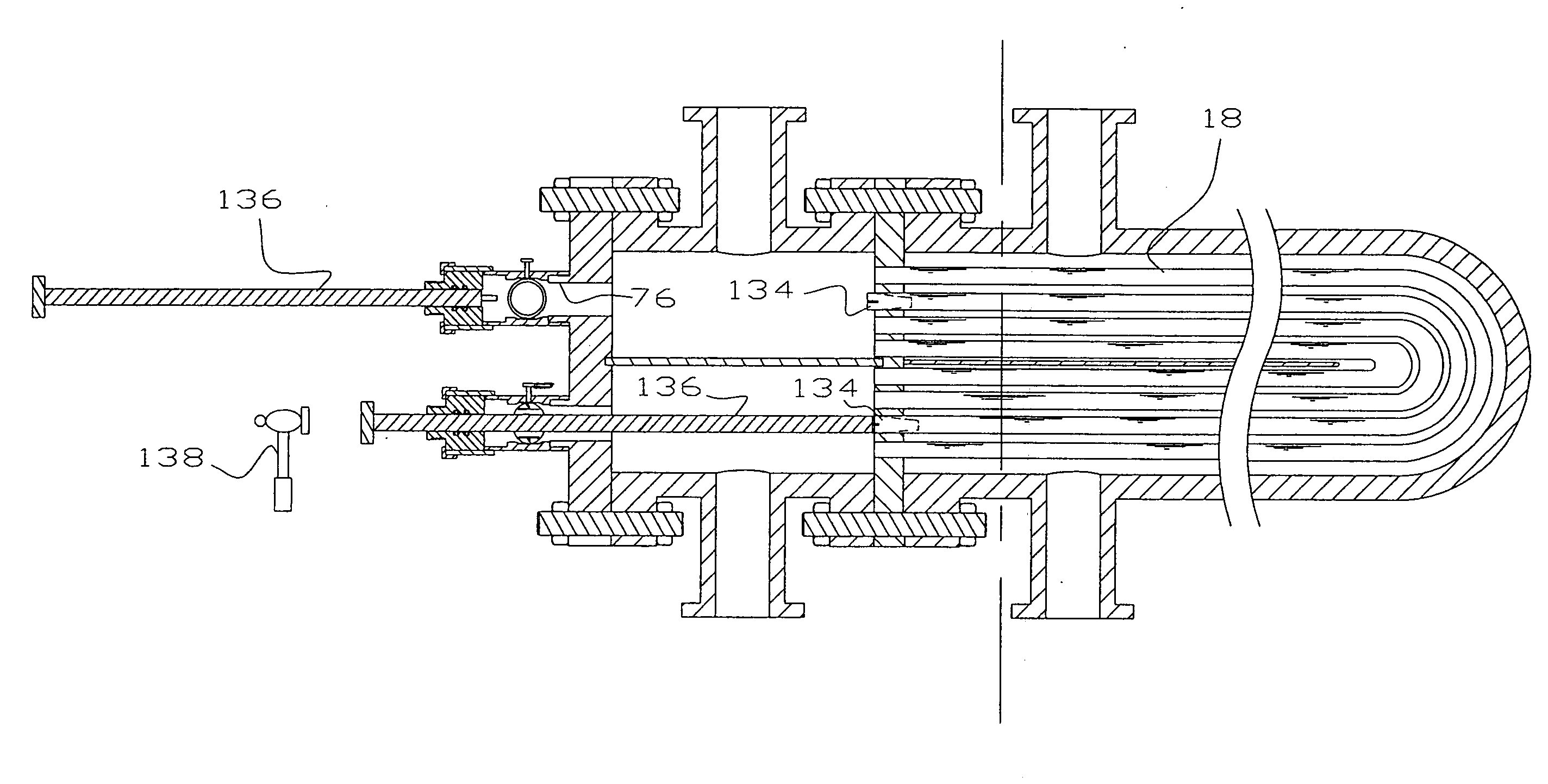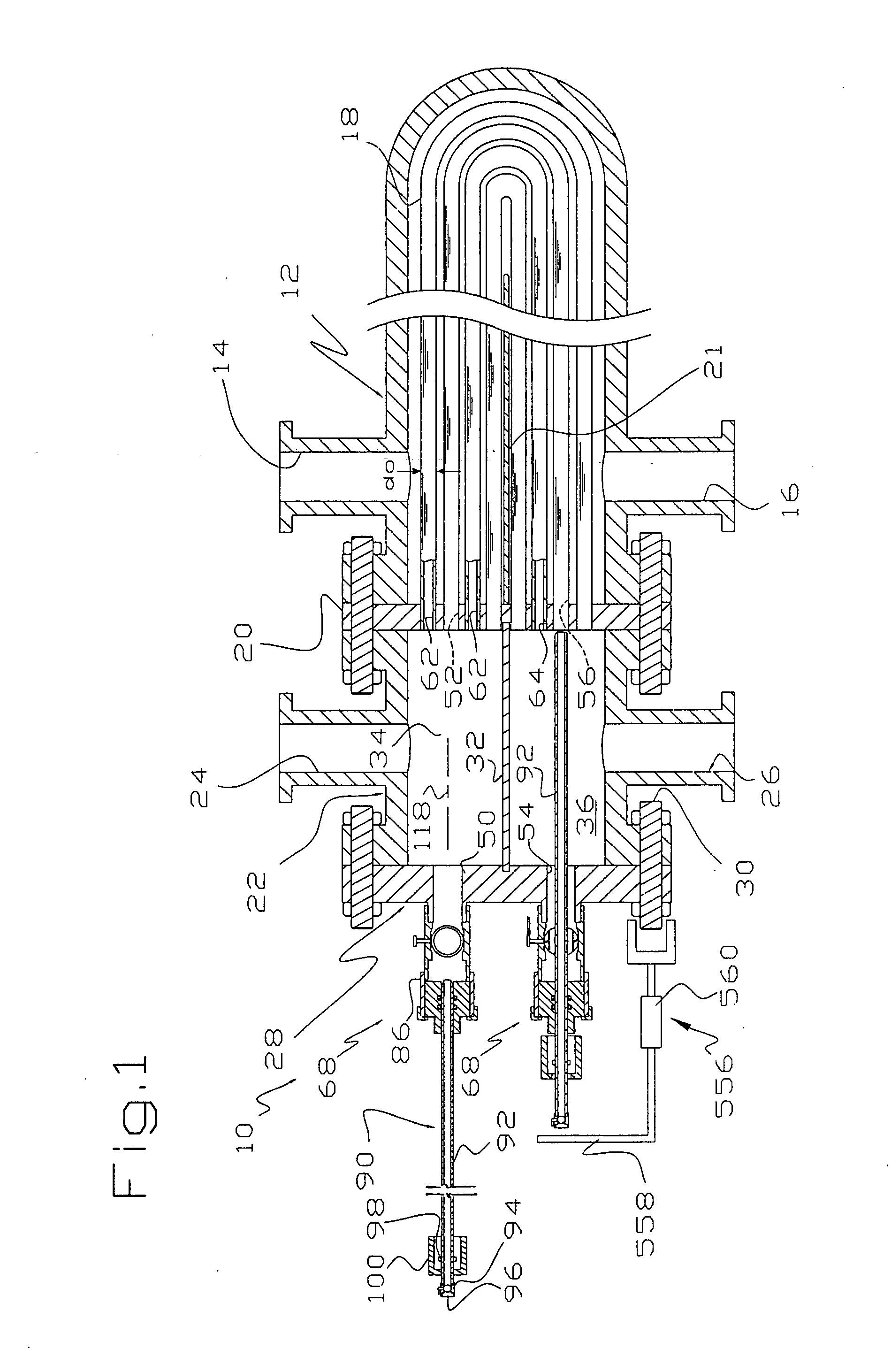Heat exchanger maintenance technique
a technology of heat exchangers and maintenance techniques, applied in indirect heat exchangers, flush cleaning, lighting and heating apparatus, etc., can solve the problems of significant impairing the performance of heat exchangers, reducing the capacity of heat exchangers, and reducing the service life of heat exchangers. achieve the effect of high capacity
- Summary
- Abstract
- Description
- Claims
- Application Information
AI Technical Summary
Benefits of technology
Problems solved by technology
Method used
Image
Examples
Embodiment Construction
[0040]Although there are a variety of embodiments disclosed which involve cleaning, inspecting, testing and / or plugging of heat exchanger tubes while the exchanger is in operation, it is understood that these embodiments are merely suggestive of numerous other approaches or techniques which may be adopted for these purposes. In general, descriptive statements do not delimit the claims in this application and some statements relative to one embodiment or feature are not necessarily applicable to other embodiments or features.
[0041]Tubular heat exchangers come in many forms and have many names. Some of the more common industrial heat exchangers that can be cleaned, inspected, tested and / or plugged with the devices disclosed herein include shell and tube heat exchangers, boilers, surface condensers and air cooled fin tube exchangers. In one sense, the disclosed devices operate on the inside of the tubes and what occurs on the outside of the tubes may be of any description. The devices ...
PUM
| Property | Measurement | Unit |
|---|---|---|
| pressure | aaaaa | aaaaa |
| pressure | aaaaa | aaaaa |
| wall thickness | aaaaa | aaaaa |
Abstract
Description
Claims
Application Information
 Login to View More
Login to View More - R&D
- Intellectual Property
- Life Sciences
- Materials
- Tech Scout
- Unparalleled Data Quality
- Higher Quality Content
- 60% Fewer Hallucinations
Browse by: Latest US Patents, China's latest patents, Technical Efficacy Thesaurus, Application Domain, Technology Topic, Popular Technical Reports.
© 2025 PatSnap. All rights reserved.Legal|Privacy policy|Modern Slavery Act Transparency Statement|Sitemap|About US| Contact US: help@patsnap.com



